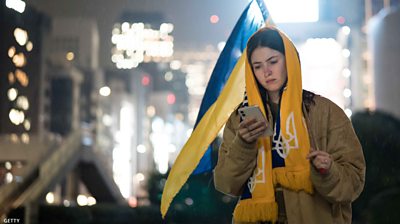We wanted to gain an in-depth picture of how the war was impacting women, and how this compared to how they were portrayed in media. But where to start? This conflict is complex, and with many people fleeing, it was hard to know the number of women and children who remained or were internally displaced since the full-scale invasion, and the impact on people’s lives.
Could we reach them?
1. We knew being inclusive was important to generate insights about different women’s experiences
It was important to interview women from across Ukraine to understand how they were affected by the war. By conducting a nationally representative survey of women, we were able to cut the data by age, location, internally displaced person (IDP) status and whether they had dependent children. This provided us a much more detailed picture than a generic analysis of men versus women.
For example, we found that women, especially older women, living in non-government controlled areas were feeling the impacts of the war most acutely – particularly in terms of access to health and social services, sanitation, food and information. This was followed by internally displaced women who had moved out of occupied or frontline regions but were living in other parts of Ukraine. They really feel the impact of the war on their mental and physical health, and on their income and employment, more so than women who had not had to relocate.
2. We used a range of methodologies to ensure women across Ukraine were represented
We managed to conduct a telephone survey with 1,500 women living in government-controlled areas of Ukraine (as of December 2022). In the survey we asked where they were living and whether this had changed as a result of the war, to ensure representation across different oblasts, and also to understand who was internally displaced. But we also wanted to hear the voices of women in the east and south, in areas which were not controlled by the government or are on the front lines (at the time of our fieldwork, Donetsk, Luhansk and Zaporizhzhia oblasts). We worked together with our local Ukrainian research agency partner, who were already in touch with women in these areas through existing research panels, to do online self-completion surveys amongst over 200 women. Online surveys enabled us to reach women who might be otherwise difficult to reach by telephone, as internet access and mobile networks being cut off in these areas; women who were able to access our online survey talked about how they used VPNs – virtual private networks - to get online.
3. Being sensitive to our local research partners - the backdrop of the war was ever present
We selected a Ukrainian research partner led by women. Together, we created research protocols for what should happen if interviews of focus groups had to be cut off or interrupted by air raid sirens or electricity blackouts. But these issues impacted our partner, too. Our Ukrainian partners were also sitting in different parts of Ukraine, having left their usual homes in order to work in a safe place. During our update calls, when not interrupted by a siren or a power cut, they would ask one another what they were living without today – be it water or electricity. But they showed amazing resilience in being able to continue high-quality research amid the uncertainty and context of the war.
4. Participatory techniques were important to dig down into entrenched attitudes around gender
Our qualitative research was key. In-depth discussion really helped to unearth individual attitudes to explore how gender roles are changing in Ukraine against the backdrop of the war.
To get a 360-degree view, we spoke to both women and men via online focus group discussions. And to understand and hear a more personal narrative experience of the war, we conducted online in-depth interviews with women from different walks of life, including women living with disabilities, women from the Roma community, women living on or near the front lines and women who identified as members of the LGBTQI+ community.
For this, we used a series of visual stimuli of women undertaking different roles in the war – including women in the military and women undertaking more traditional roles as mothers and caregivers. These included memes, photos and news stories. Having pictures to stimulate the discussion prompted women and men to reflect and think about how they felt about changing gender roles and reflect on changing gender dynamics than if we had just asked straight questions and answers.
5. Representing the diversity of Ukrainian women’s experiences is vital to support organisations working for gender equality
The need to accurately represent the voices of the audience – especially women in Ukraine who face the wide-ranging impacts of war most acutely - was at the forefront for all of us. Those women have the additional responsibilities of sole care for family and dependents, taking up new roles and holding down employment, amid the stress of living amid uncertainty. Accurately representing the voices of these women and gathering data in the most appropriate and sensitive way was very important to us.
This is also why we wanted to make sure the research was accessible and could be used extensively by media partners, humanitarian practitioners, donors and policy makers - these insights are relevant to everyone. We created briefings in English and Ukrainian and also an engaging short animation you can watch here.
Women expressed concern about the impact of the elevation of men as defenders and heroes, and what this would mean for gender roles and perceptions for the next generation.
We heard so many stories of women who were severely impacted by the war but who were showing incredible resilience; women just expressing the need to survive; and women feeling the impact on their mental health. Access to high quality media and trusted communication was especially difficult for women living in occupied regions; as one woman in Kherson told us, “we are in an absolute information vacuum”.
It’s clear that Ukrainian society increasingly recognises the importance of women's pivotal role in the full-scale invasion. So it’s critical that media and communication in the country also reflect this. Women’s voices are diverse and strong. We need to listen to all of them.
--

